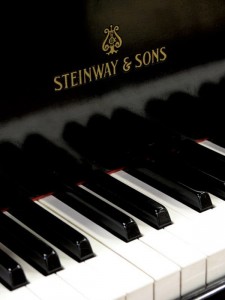 Since 1853, Steinway & Sons has been handcrafting high-quality pianos that are a favored choice of concert halls, theaters, and schools around the world. Though it commands 98 percent of the concert venue market, this market segment does not drive Steinway’s business results; only 15 percent of sales are to such institutions. Rather, the majority of sales are to individuals and musicians. These customers aspire to emulate the sound, but more importantly the status and exclusivity, of concert halls in their own homes and music studios. To enhance its image, Steinway sets price points very high, with buyers paying in many instances more to buy a piano than a luxury automobile.
Since 1853, Steinway & Sons has been handcrafting high-quality pianos that are a favored choice of concert halls, theaters, and schools around the world. Though it commands 98 percent of the concert venue market, this market segment does not drive Steinway’s business results; only 15 percent of sales are to such institutions. Rather, the majority of sales are to individuals and musicians. These customers aspire to emulate the sound, but more importantly the status and exclusivity, of concert halls in their own homes and music studios. To enhance its image, Steinway sets price points very high, with buyers paying in many instances more to buy a piano than a luxury automobile.
A prestige pricing strategy seeks to reinforce customer opinions of a product’s exclusivity and quality. The price point itself becomes a lever to influence perceptions. Luxury fashion brands such as Louis Vuitton and Versace are other examples of prestige pricing. While these companies generally sell products that cost marginally more to produce than rival offerings, the primary driver of pricing is not the margin, but rather what customers are willing to pay.
Prestige pricing supports a luxury product’s aura of exclusivity. Steinway pianos can be purchased at only a small number of pre-approved dealers who meet authorization criteria set by the company. The dealers are restricted in what discounting behavior they can engage in and so closely adhere to the manufacturer’s suggested retail price. The company produces a mere 5,000 pianos annually, keeping inventory scarce, while other manufacturers produce 20 times that figure. Prestige pricing complements the status that owning a product conveys to the customer. With some pianos priced at nearly $60,000, purchasers of Steinways believe they are also buying exclusivity, as relatively few individuals and musicians can afford to invest so much in a musical instrument.
Similar to skim pricing, the high pricing used with prestige pricing can convey quality. However, unlike skim pricing, where drops can occasionally be used to make the customer believe he is getting a deal on a top-quality product, prestige prices generally remain high. This strategy is more easily accomplished when customers easily compare value or product features. Are the wealthy customers’ ear so well tuned that they can discern the difference between the sound of a Steinway piano and that of a competitor piano? In fact, no definitive authority or accepted mechanism exists for measuring piano quality, and there are no widely known resources for understanding the specific features and characteristics of each instrument on the market. Therefore, customers use other more subjective cues, such as what influencers are using, the reputation of the product, and the price, to determine the value of their purchase.
But a prestige price cannot only be reflective of a sales transaction. Customers expect a high degree of service and support, and companies need to factor this additional cost into their pricing. Quality must be maintained as the feeling of exclusivity and prestige will quickly dissipate if buyers feel they were cheated. Customers also expect sellers to maintain the aura of exclusivity. This somewhat limits the levers a company can pull. For example, Steinway cannot simply decide to lower the price dramatically in an economic recession to drive volume. The ripple effect of a perceived loss of exclusivity would likely affect the brand and future pricing for years to come. For this reason, prestige pricing rarely works well for companies with fixed capacity or with the need to drive economies of scale. With this strategy prices must remain relatively high regardless of slowing demand.
Another intriguing aspect of the prestige pricing approach is how the price itself is presented. Some research suggests that the cents portion of a price can drive different impressions. Robert Schindler wrote in the Journal of Retailing: “Despite often being considered similar to the 99 ending, the 95 ending was found…to be not correlated with low price appeals.” A prestige price will typically not include any trailing digits beyond the decimal, using whole-number prices alone. This tends to perpetuate the perception of high value and premium quality.
Steinway & Sons remains one of the world’s most revered piano manufacturers and continues to charge premium prices for its products. Pianos tend to retain their value (and usefulness) for a considerable period of time, and models don’t differ dramatically from one year to the next. But other products may not endure so well or they may simply run their course in the market.
Book excerpt from: Pricing and Profitability Management: A Practical Guide for Business Leaders
